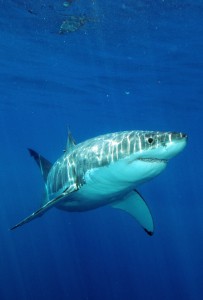 Animal Biotelemetry, a new open access journal published by BioMed Central has launched today. This new journal aims to support the telemetry community by providing a single home for this research and disseminating findings widely across all users of tagging telemetric technology.
Animal Biotelemetry, a new open access journal published by BioMed Central has launched today. This new journal aims to support the telemetry community by providing a single home for this research and disseminating findings widely across all users of tagging telemetric technology.
Through recent advances in technology, there has been an acceleration in the uses of telemetry to address a wide range of conservation concerns; recording locations, as well as physiological and behavioural measurements of tagged animals. Furthermore, these devices can now be used on a variety of taxa, from measuring the movement of tiny insects, to detecting brain patterns in birds, and long range migration tracking of fish and large mammals.

The journal is led by Editor-in-Chief, Dr Peter Klimley, who is the director of the Biotelemetry laboratory in the University of California, Davis and is supported by a high profile expert editorial board. Dr Klimley’s own research activities has earned him the name ‘Dr Hammerhead’, as he is known to have held his breath while diving up to 100m deep in order to hand-tag hammerhead sharks with a dart gun. In his launch editorial, Klimley provides a brief, historical description of the field, as well as discussing the need for this journal. He explains ‘The publication of Animal Biotelemetry will provide a new venue for publishing information on the migratory movements of fishes, reptiles, birds, and mammals on land as well as in the sea. It will enable researchers to keep up with the rapidly evolving technologies. Researchers can record now brain waves from migrating birds as they encounter to landmarks and track the migratory paths of insects such as butterflies.’

In one of the launch articles, Domeier and Nasby-Lucas use satellite-linked radio-telemetry tags to track the movements of northeastern Pacific adult female white sharks over the course of their full two year migrations. Klimley summarizes ‘Michael Domeier has published the first multi-year tracks of the migratory movements of white sharks. His long term records enable us to better know the life history of this charismatic species.’ This research is of key conservation value, as migration patterns are highly important in establishing effective conservation policies at a species level. Also published at launch, Walker et al. investigate the effectiveness of ultraviolet radiation to sterilize surgical tools used for fish tag implantation and Økland et al. evaluate methods for attaching pop-up archival tags to European Eel, in laboratory conditions.
These launch articles represent just a fraction of the total uses for telemetric techniques, and Animal Biotelemetry encourages submissions from researchers working on all taxa and environments utilizing this technology. This journal is a welcome addition to BioMed Central’s portfolio of ecology journals, as Deborah Kahn, Publishing Director at BioMed Central explains ‘BioMed Central is very pleased to be launching Animal Biotelemetry, which will support the telemetry community and the important conservation goals that they are striving to achieve. This journal is an exciting new addition to our growing portfolio in ecology and conservation and, through the Open Access model, researchers can be confident that their work can be disseminated as widely as possible within their field, as well reach policy makers and the general public.’
You can sign up for article alerts from Animal Biotelemetry here. For more information, please visit the journal website or contact the Editorial Office.
Rhiannon Meaden, Journal Development Editor, Animal Biotelemetry
Latest posts by Rhiannon Meaden (see all)
- Guinea pig teenagers are highly domesticated - 9th April 2014
- Goats, the boffins of the farmyard - 26th March 2014
- Developments in Daphnia - 25th March 2014
Comments